#working with science
Explore tagged Tumblr posts
Text
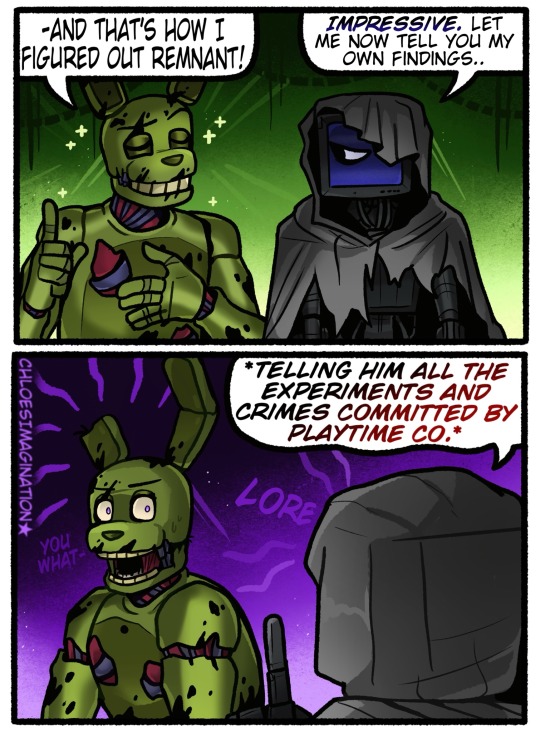
Poppy playtime got a guy worse than William Afton
#myart#chloesimagination#comic#fnaf#five nights at freddy's#fnaf fanart#springtrap#william afton#harley sawyer#fnaf 3#poppy playtime#poppy playtime doctor#poppy playtime chapter 4#So I saw the new poppy playtime chapter#and I think the plot and characters finally worked for me#really sparked my interest#I DONT love all the directions that chapter takes#but can we all talk about how cool the doctor is#AND BY that I mean how truly twisted he is#William’s crimes somehow feel small now#in the face of the company that just experiments on just kids#the doctor is awful in every way sick and twisted#and I think that’s epic#just the idea of William hearing the shit playtime co got up to#like I think the scale of it would genuinely shock him#even if he’s interested in that science as well#I may draw a lil more poppy stuff as a treat we’ll see
11K notes
·
View notes
Text
I can't articulate how utterly inhumane it is that we've not only normalized, but valorized, sleep deprivation. We treat it like an achievement.
Sleep deprivation increases your risk for a myriad of serious illnesses like heart disease, kidney disease, diabetes, and stroke.
And that's just to name a few.
Some of the most important cellular work we do all day happens while we're sleeping. When we don't get enough quality sleep and rest, our cells literally can't effectively repair themselves.
It literally damages every system in our bodies.
Capitalism lies.
Getting enough sleep is actually one of the most meaningfully "productive" things we can do.
9K notes
·
View notes
Text
inaturalist user appreciation post. a huge chunk of my posts would not have corresponding images if not for the people who decided to snap a photo of a cool bug they found and upload it. thank you <3
#inaturalist#i love collaborative science i love when we all work together for the sake of better understanding the world we live in. i love you
4K notes
·
View notes
Text
Meet the seven new frog species we just named after iconic Star Trek captains!
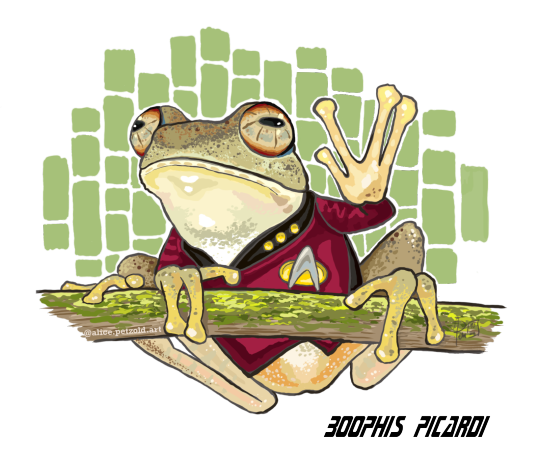
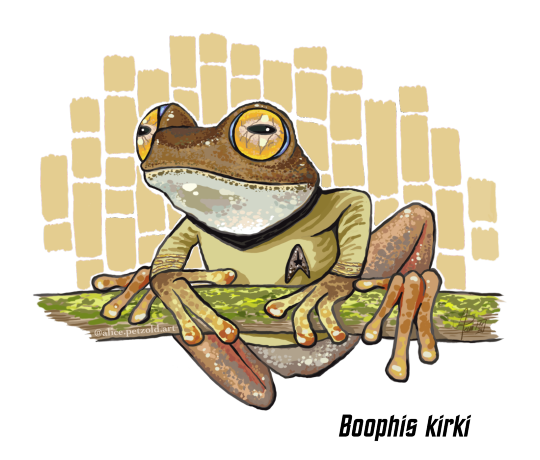
Artwork by A. Petzold, CC BY-ND 4.0
At the right time of year along rushing streams in the humid rainforests that stretch the length of Madagascar's eastern and northern mountain ridges, otherworldly trills of piercing whistles can be heard.
Are they birds? Insects? Communicator beeps? Tricorder noises?
No, they're little treefrogs!
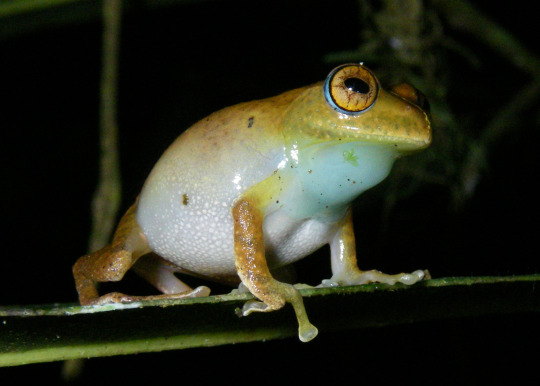
Boophis janewayae. Photo by M. Vences, CC BY-SA 4.0
Until recently, we thought all of the populations of these little brown frogs across the island were one widespread species, Boophis marojezensis, described in 1994. But genetics in the early 2000s and 2010s showed that there were several species here, not just one.
Now my colleagues and I have shown that they are in fact eight separate species, each with unique calls!
These whistling sounds reminded us so much of Star Trek sound effects that we decided to name the seven new species after Star Trek captains: Boophis kirki, B. picardi, B. janewayae, B. siskoi, B. pikei, B. archeri, and B. burnhamae.
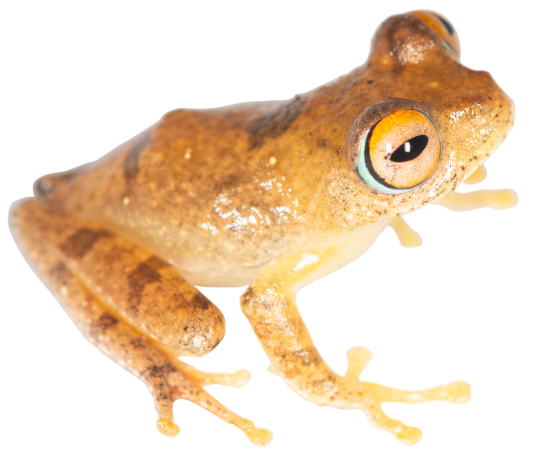



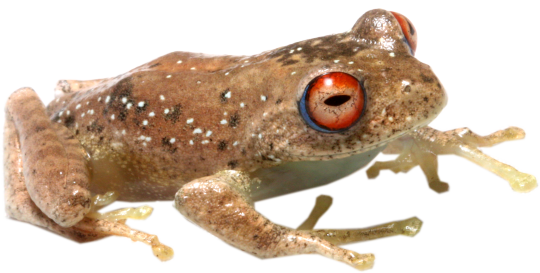


Photos of all new species described by Vences et al. 2024. CC BY-SA 4.0
I subtly and not-so-subtly built some Star Trek references into the paper, but probably the best one is this one:
'Finding these frogs sometimes requires considerable trekking; pursuing strange new calls, to seek out new frogs in new forests; boldly going where no herpetologist has gone before.'
— Vences et al. 2024
There’s a real sense of scientific discovery and exploration here, which we think is in the spirit of Star Trek.
Of course, it doesn't hurt that there are at least two Trekkies amongst the authors (including yours truly). As fans of Star Trek, we are also just pleased to dedicate these new species to the characters who have inspired and entertained us over the decades.
On a personal note, this marks a milestone for me, as it means I have now described over 100 frog species! I am very pleased that the 100th is Captain Janeway's Bright-eyed Frog, Boophis janewayae (if you count them in order of appearance in the paper)—she is probably my favourite captain, and I really love Star Trek: Voyager.
You can read more about the discovery of these new species on my website! You can also read the Open Access paper published in Vertebrate Zoology here.
#news#breaking news#Star Trek#new species#science#animals#WAKE UP BABE NEW FROGS JUST DROPPED#Boophis#Boophis janewayae#Boophis burnhamae#Boophis siskoi#Boophis pikei#Boophis archeri#Boophis kirki#Boophis picardi#in which nerds bring their nerdiness to work#Engage#WERE YOU WATCHING THIS SPACE?#THE FINAL FRONTIER?#DID YOU GET THE REFERENCE‽#Every time I have used that tag it has made me giddy with glee#you thought I was just goofin'#but I was FORESHADOWING#There's frogs in that nebula
8K notes
·
View notes
Text







TW: Heavily implied Child Abuse
Stowaway AU where Pacifica becomes a stowaway on the Stan-O-War 2 after trying to run away from home to California. Things don’t exactly work out as planned, but at least she’s got a “Summer Internship” away from her parents now!
#gravity falls#Pacifica Northwest#Stanley Pines#Stanford Pines#Stowaway AU#my art#doodles#sorry I’ve been gone a while been busy with project and just plain general work#but had some free time today and finally put pen to paper on an idea I’ve had a for a while now!#Pacifica calls Stan by his name but still calls Ford Mr Pines because she’s got that ettiquette and fear of authority ingrained in her#but Stan is a bugger so she feels better just calling him Stan lol#this is honestly just a roundabout way of saying Stan is naturally good with kids I think#the more paternal grunkle lol#Also I feel like ghost rules in the show are ghosts can change their perception based on how powerful they are#since sometimes they’re invisible or unseen by people unless the ghost wills it (i.e. inconveniencing)#but Pacifica’s just too ghost pilled so she’s always seeing them regardless#Ford is very interested in the science of how this works and Stan has to remind him she’s still trying to get over trauma give her a second#I feel like after this summer at least specifically for this AU she’d end up staying with either Soo and Melody or the Corduroys#Soos might even say they’re siblings since he also sees Stan as a father figure and then Pacifica says ‘dang guess I gotta go die now’#from embarrassment lol
4K notes
·
View notes
Text

SCIENCE BEGETS TRUTH✨
#ace attorney#my art#ema skye#the text behind her also says 'SCIENCE BEGETS TRUTH#and she's holding two micro pipettes haha#YES I KNOW THEY'RE UPSIDE DOWN LEAVE ME ALONE#THEY ARE EMPTY!! GOD FORBID A MAD SCIENTIST HAVE WHIMSY#I really liked doing this one tbh... it's fun silly ace attorney stuff but behind it is a message I truly believe in too!!!#I used to work in a lab. I thought I wanna gunna be a scientist#I'm an artist now though. I hope AU scientist me is out there living her best life#this art is a love letter from me to ace attorney and to science!!!!#thank you everyone on patreon for voting for me to draw ema skye
8K notes
·
View notes
Text
The weirdly competent Doctor
So! The Watchtower's Medical Bay is a hub of constant Activity. With the number of Heroes who work under the Justice League, there are always injuries, health check-Ups, and illnesses that need healing.
But with the amount of Variant Biologies that those Heroes have, it's always a guessing game as to how to help them best. Some Metahumans react positively to penicillin, but others react like it's their Kryptonite. Some Aliens have anatomy similar to Humans, others are so different you can't tell the Stomach from the Bladder.
So when they hired a New Doctor for the Medical Bay, they had to run him through an entire Course on Variant Biologies and how best to treat specific Heroes. It was long and difficult to remember fully, but it was necessary for him to know.
But then the new Doctor started correcting Them.
"Actually, Martian's react better to the Syrup of Eucalyptus Plants better than Penicillin, since Eucalyptus is very similar to a medicinal plant from Mars which they used in many of their antibiotics."
"I don't think just pumping double doses of sedative is the best way to calm down a Speedster, that could have adverse effects on their body. Perhaps try Psychic Intervention? Their minds move a Mile a Second, but if you can calm them down their bodies will follow suit."
"Of course you use Micro-Doses of Kryptonite to operate on Superman! What else would you do?! I don't know, maybe ask JLD to enchant your Equipment to make use of Kryptonian suseptiblity to Magic? The Kryptonite is just gonna give him Cancer!"
Of course the Doctors didn't take kindly to being rudely corrected by a newbie, and Fired him on his first day.
Then a few days later their usual Treatments don't work, and they decide to give those strategies the Quack Doctor gave them out of desperation.
And Lo and Behold, they work! Martian Manhunter is fully healed and feels much better than the previous times he has needed surgery. Apparently they used a different Antibiotic that worked better with his Biology. Which was incredible, how had they figured it out?
Another Doctor you say? One who was experienced on Martian Biology and Medicinal History? He would very much like to meet with the man!
...
What do you mean you fired him for talking back?!
#Dpxdc#Dp x dc#Dcxdp#Dc x dp#Danny Phantom#Dc#Dcu#Danny is a Doctor#Danny is the best Doctor#He is more experienced with different biologies since he studied under Frostbite and worked in Amtiy for so long#He had literally operated on Martin's and Speedsters before#When Batman hears about this he's gonna lose it#They had a Doctor who had extensive knowledge on the biology if dead races and they FIRED HIM!?#For talking back!?#Sure he was a little rude about it but to be fair you guys were using Kryptonite on Superman to Operate#Did none of you consider his other Big Weakness? Magic?#Oh as men of science you don't value magic do you?#Well he does apparently so bring him back here Now!
8K notes
·
View notes
Text
i think everyone should program at least once just so you realise just how fucking stupid computers are. because theyre so fucking stupid. a computer wants to be told what to do and exactly that and if you make one typo or forget one detail it starts crying uncontrollably
#ramblings#comp sci#computer science#codeblr#laying on my bed trying to mentally process wtf is wrong that makes my code not work
2K notes
·
View notes
Text

telemachus when a hundred men break into his house and call his mom a tramp or something idk
#epic the musical#epic the wisdom saga#telemachus#wisdom saga#i should be studying but icfl if i look back at my science work in this state that i am in i may end it all#bel's art
6K notes
·
View notes
Text
something interesting about me is that i am so hot and funny and charming and everyone loves me but also i am an unloveable freak of nature. scientists didn't think it was possible but i made it work.
#if you relate to this you are just the hot and charming part#except not the funny part only i'm allowed to be funny#another mystery of science but it just works somehow
4K notes
·
View notes
Text

Don't worry, they're into that.
(Want to know if this ancient sea god of destruction gets more belly paps? Or perhaps...a kiss? Find out in Tiger Tiger!)
#tiger tiger#ludovica bonnaire#luck#I feel a strong need to loudly resume my Tiger's propaganda to remind people that the comic is BACK.#It technically never left but it's here and it's still a deeply queer and delightful story set on the high seas.#There has been a lot going on behind the scenes for the creator and if you love art and comics - please consider supporting this one.#Petra works so hard to create amazing comics! And the community is so wonderful!#Join us! Join us on the high seas!#I admit to having taking a hiatus from reading for a while...I am going to make up for it as much as I can.#Sausage is so delightfully *shaped*...I too would doll them up like Ludo did.#This comic has been in my wips for ages - I still feel like I couldn't pull off what I wanted but done is better than nothing at all.#I want to yell about them so badly but I'm simply not equipped to draw the cool ancient god stuff. I'm trying....I will learn...#They are both the hot girlfriend letting the other do mad science on the other. No other way to describe it.
1K notes
·
View notes
Text


Rip the streak... 😔
#I like to imagine the gaster followers as like#past memebers of Gaster's science crew#I also just thought it'd be fun to see how they'd look before they get greyscaled#sans#sans the skeleton#gaster#w.d gaster#sans undertale#undertale gaster#undertale#ignore the fact that I forgor the whiskers on the second panel#gaster followers#gaster follower 2#gaster follower 1#my works
6K notes
·
View notes
Text

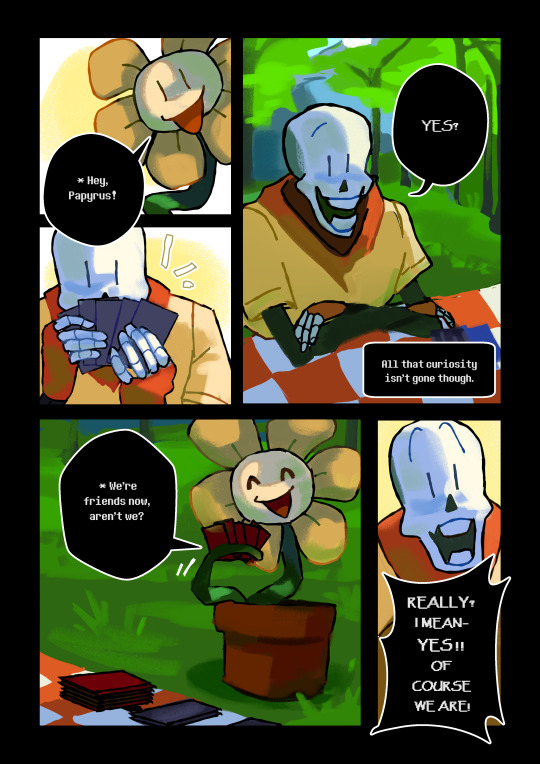
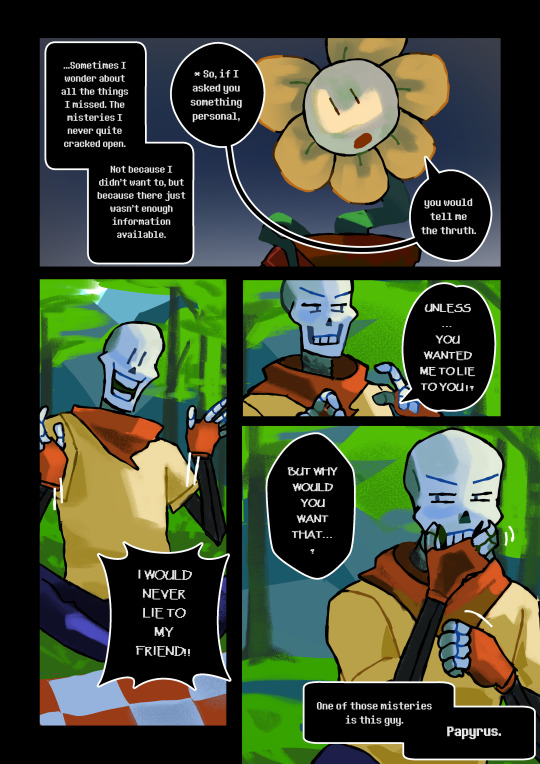
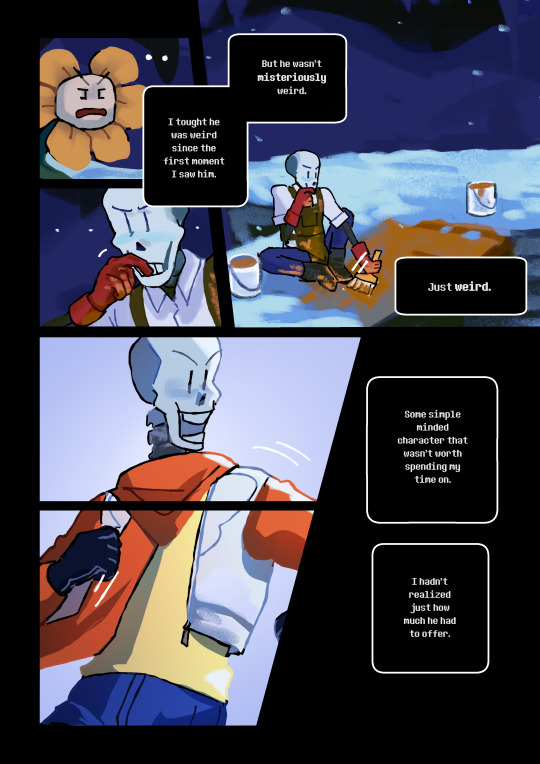

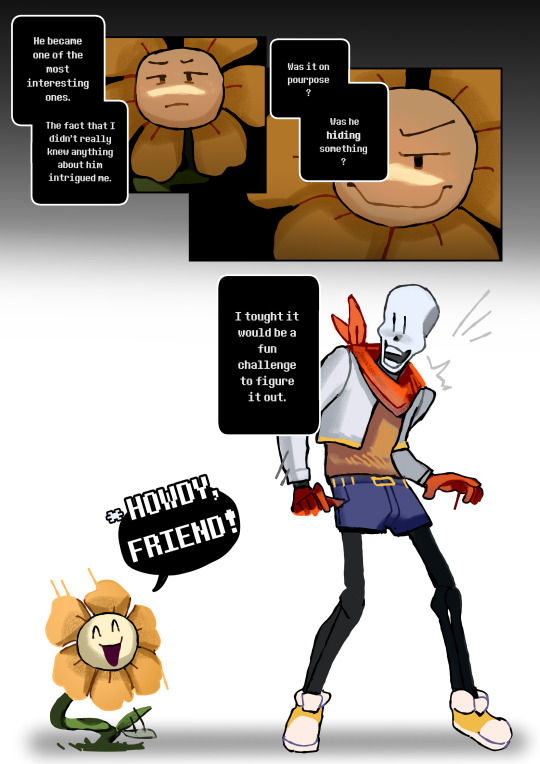
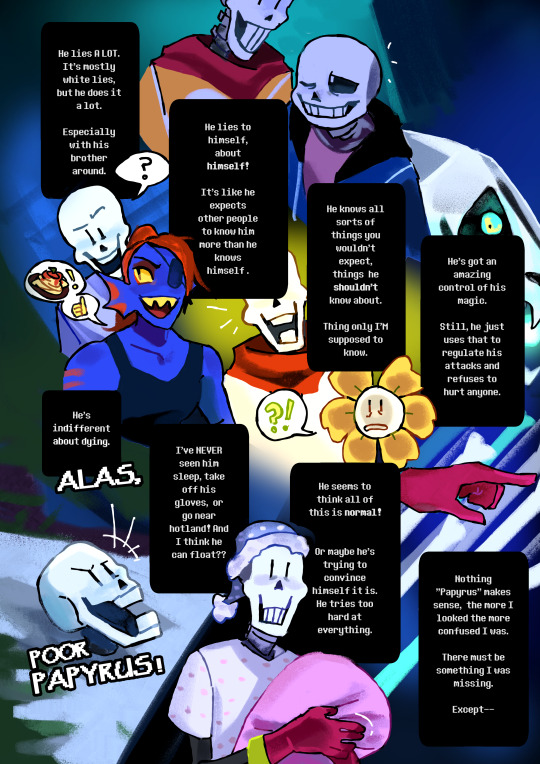
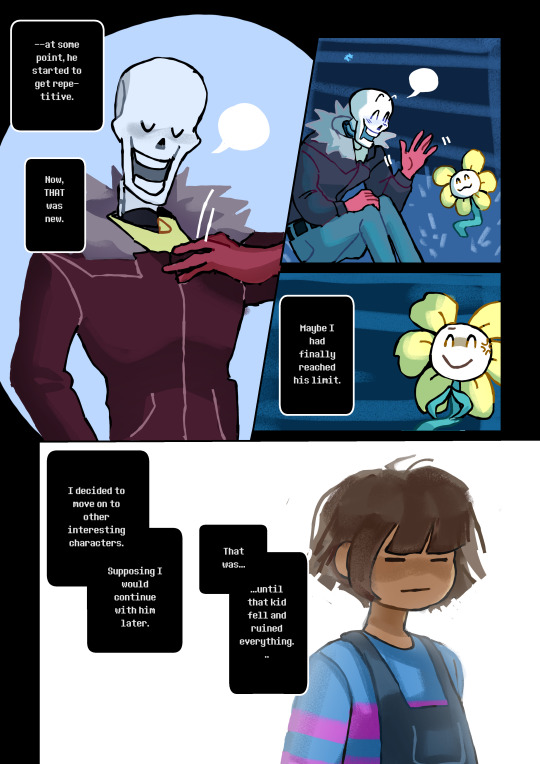
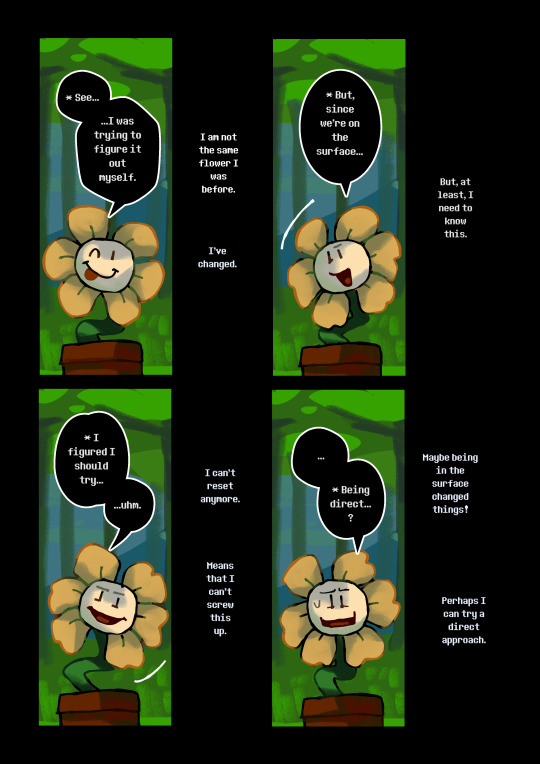
PROLOGUE
FORGETTABLE-AU (Page 1-9)
AND SO IT BEGINS!
[CONTINUE] [MASTERPOST]
#So excited for this thing to finally start!#The prologue is an introduction to what Flowey is thinking and what he might be planning#But since flowey has always been a representation of the player...this also works to set the story for the readers and make them curious#don't be sad that the science squad isn't in the prologue#they're gonna be here for all of chapter one so you're seeing them next week!#okay I need to actually add tags to this thing#I don't like how page 7 looks but ig there's nothing I can do about it now#undertale#forgettable-au#undertale au#papyrus#papyrus is gaster#undertale comic#flowey#undertale fancomic#forgettable-au-comic
6K notes
·
View notes
Note
Hey are you willing to BLAST Kat Bolstad’s page on the AUT website? She’s the researcher who voiced over the colossal squid video and it’s making me so mad that people’s hatred of generative AI is so strong that they’re trying to crowd out an incredible cephalopod researcher who frankly speaks with a similar cadence to David Attenborough (those documentary skills!!!) especially during a time where we need to encourage women in STEM. This is the real damage generative AI is doing.
https://academics.aut.ac.nz/kathrin.bolstad
String identified: Acat at ta AT a a caat , gatg t t a ac ca cg ca (, ct a t at). t at AT, at t t ata ata t (ta ttt, agt, .C.) a t ga Aa t, A. a caat t t aa T aa Tgaa, t ata ttt at & Atc ac (A), t t a Aa ac ttt (A), c ttt caga, a t t Ataa . at' a ac c a t ca a , a -a . a a gat c a a ca , a c a a a -ta t. a a atcat cta a t t t Atactc.
Closest match: Arctia caja genome assembly, chromosome: 13 Common name: Garden Tiger Moth

(image source)
#tumblr genetics#genetics#biology#science#asks#weirdstrangeandawful#Kat Bolstad#bugs#insects#moths#garden tiger moth#i heard some people asking if the voice in the colossal squid video was AI but i had no idea it was this bad!#kat bolstad is frankly an amazing researcher#i'm always impressed by people who dedicate themselves to the study of one specific type of organism#her work in not just helping to document these cephalopods#but also in making that research available to the wider public is very honorable!#thank you kat bolstad!!#and thank you for bringing us this FANTASTIC moth!!
1K notes
·
View notes
Text
400,000 new cases of tuberculosis (TB) were estimated to have been prevented by these rats, whose sense of smell would make a bloodhound take notice. As the number-one killer among infectious diseases worldwide, many of those 400,000 can be translated into lives saved.
“Not only are we saving people’s lives, but we’re also changing these perspectives and raising awareness and appreciation for something as lowly as a rat,” said Cindy Fast, a behavioral neuroscientist who coaches the rodents for the nonprofit APOPO.
“Because our rats are our colleagues, and we really do see them as heroes.”
APOPO uses giant pouched rates to sniff out traces of TB in the saliva of patients. In parts of Tanzania, a saliva smear test under a microscope by a human may only be 20-40% effective at detecting TB.
By contrast, a giant pouched rat like Ms. Carolina, a now-retired service rat who worked for APOPO for 7 years, raised the rates of detection on TB samples by 40% in the clinic where she worked.
It would take 4 days for scientists to analyze the number of samples that Carolina could screen in 20 minutes. For that reason, when Carolina retired last November, a party was thrown at the clinic in her honor, and she was given a cake.
TB is sometimes thought of as a thing of the past—a disease for which doctors used to prescribe “dry air,” leading modern humors to muse at the antiquated, pre-antibiotic medical advice.
But it remains the number-one cause of death globally from a single infectious pathogen, and Tefera Agizew, a physician and APOPO’s head of tuberculosis, told National Geographic that once people see what the nonprofit’s rodents can do to slow the spread, they “fall in love with them.”
3,000 times in her career did Carolina detect one of the six volatile compounds that can be used to identify Mycobacterium tuberculosis, and she got a hero’s send off to a special compound to live out the rest of her days with her closet friend and sniffer colleague Gilbert, in a shaded enclosure dubbed “Rat Florida.”
“We’ve made special little rat-friendly carrot cakes with little peanuts and things on it that the rat would enjoy,” Fast said. “Then we all stand around and we clap, and we give three cheers, hip hip hooray for the hero, and celebrate together. It’s really a touching moment.”
#good news#animals#rats#TB#tuberculosis#africa#east africa#animal helpers#working rats#working animals#diseases#health and wellness#science#nature
2K notes
·
View notes